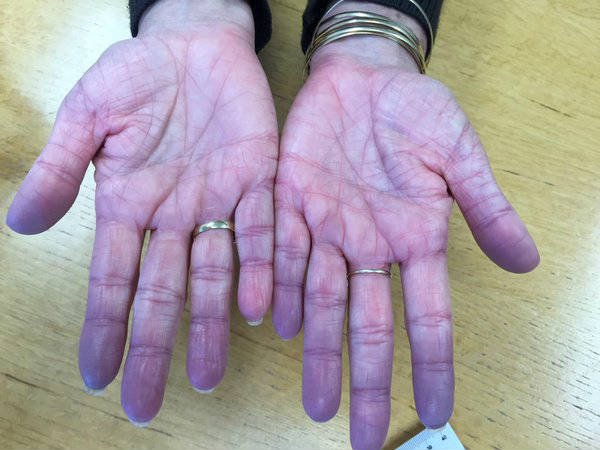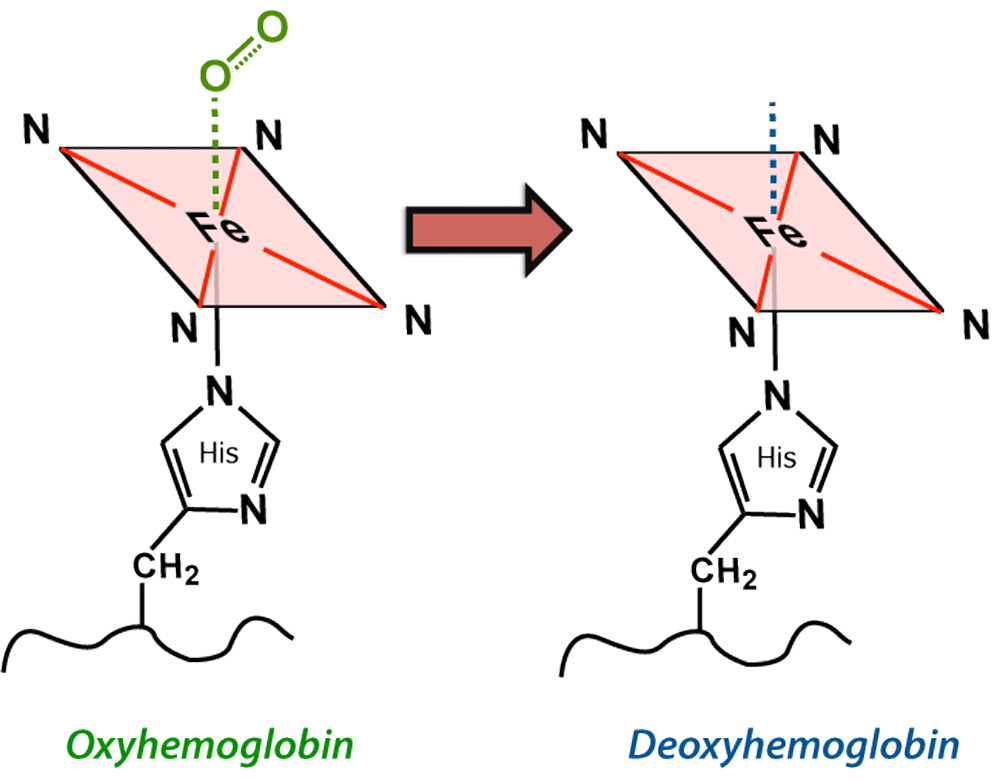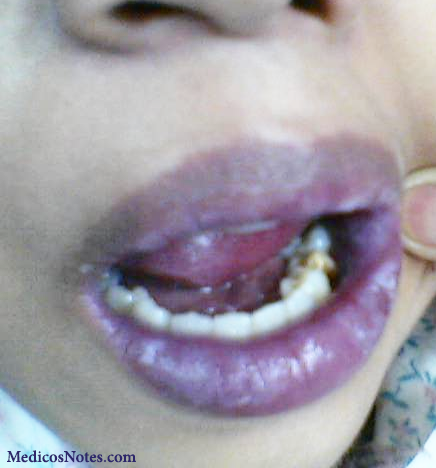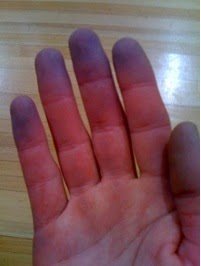Introduction
Many conditions can cause the skin to turn bluish and this skin discoloration is called Cyanosis.
Cyanosis is defined as the bluish or purplish discoloration of the skin due to tissues near the skin having no oxygen saturation. According to van slyke's work excessive concentration of deoxyhemoglobin causes discoloration of the skin.
Cyanosis is divided into two main types which are:
- central cyanosis and
- peripheral cyanosis
Central cyanosis is often due to circulatory problems that lead to poor blood oxygenation in the lungs. They are mostly around the lips, tongue and core. Central cyanosis can be due to the following causes
- Drug overdose
- Suffocation
- Heart abnormalities (present during birth) that cause blood to bypass the lungs and never collect oxygen
- Pneumonia
- Valvular heart disease
- Problems with lung expansion or chest wall injuries
Peripheral cyanosis is the blue tint in fingers, due to an inadequate or obstructed circulation. The blood reaching the fingers is not oxygen-rich and when viewed through the skin a combination of factors can lead to the appearance of a blue color. All factors contributing to central cyanosis can also cause peripheral symptoms to appear but peripheral cyanosis can be observed in the absence of heart or lung failures. Small blood vessels may be restricted and can be treated by increasing the normal oxygenation level of the blood.
Cyanosis can also be the result of a worsening health condition or develop gradually as a result of a chronic or long-term health condition. Many health disorders that involve the heart, lungs, blood or circulation will also cause cyanosis. These include:
- Chronic respiratory disease, such as asthma
- Exposure to certain poisons, such as cyanide
- Severe anemia, or low red blood cell count
There are various symptoms you start to notice if you have cyanosis and that calls for an immediate visit to the doctor. these are:
- Coughing up dark mucus
- Rapid breathing
- Chest pain
- Confusion
- Difficulty breathing
There are different test done to diagnose the cause of cyanosis. There tests include:
- Complete blood count (CBC)
- Pulse oximetry to measure the level of oxygen in your blood
- Electrocardiogram (ECG) to measure the electrical activity of your heart
- X-ray or CT scan of your chest
In blood tests, extremely low concentrations of hemoglobin can causecyanosis. Central cyanosis occurs when your hemoglobin count reaches below 5 g/dL. Normal hemoglobin for an adult is between 12-17 g/dL.
We now know some causes of cyanosis but some are difficult to prevent we must take different steps to lower the risk of developing cyanosis*. There steps include:
- Protecting your heart, blood vessels, and respiratory system by avoiding smoking and second-hand smoke and exercising regularly.
- Following your doctor’s recommended treatment plan for any health conditions that you have, such as diabetes, heart disease, asthma, or COPD.
- Scheduling regular check-ups with your doctor to monitor your health and contact them if you notice any changes in your health.




Congratulations, you were selected for a random upvote! Follow @resteemy and upvote this post to increase your chance of being upvoted again!
Read more about @resteemy here.
This post has received a 0.14 % upvote from @drotto thanks to: @banjo.
Very educative.
Nice one boo
Thanks babe
So educating